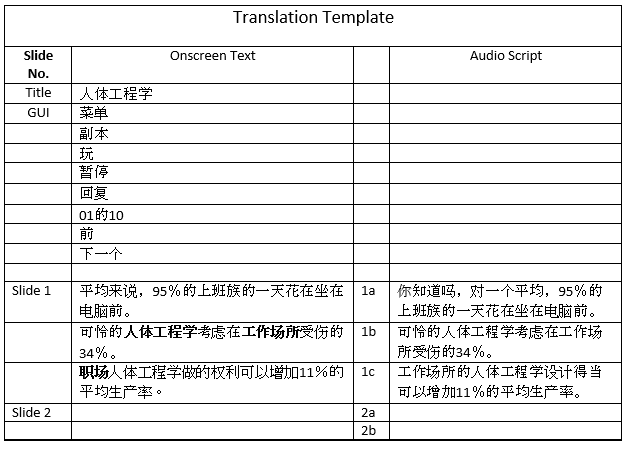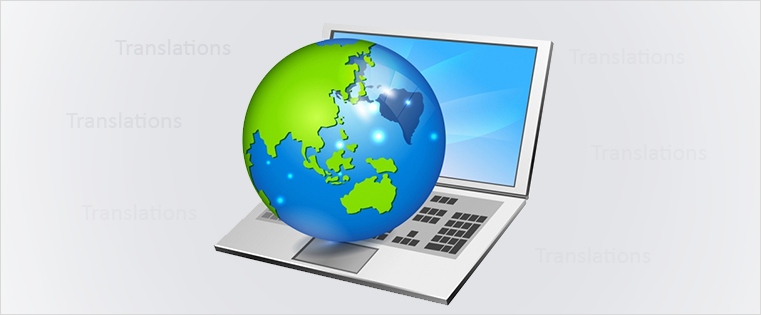Challenges in the E-learning Translation Process and How to Overcome Them – Part 3

In my last blog, we saw how to create a translation template using all four rapid authoring tools. In this blog, we will learn about the process of template translation and proofreading by the client.
Template Translation:
We send the finalized template in English to the translator, who translates this template to the required language (e.g., English – Chinese) as shown in the table below.

Proofreading by the client:
Before developing the course in the authoring tool, the template document should be proofread by a language/subject-matter expert and the client. If you find any changes such as missing content in the template or if you have any changes from the client that needs to be included, then you need to send the template back to the translator for incorporating the changes. By doing this we avoid the stress and efforts involved in re-work. Once you get the final proofread templates, you are ready to send the audio script to the narrator.
In my next blog, I will be talking about the process of audio recording done by the narrator.





